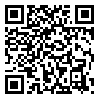One of the main anxieties in application of wastewater and compost in agricultural lands is their salinity and uptake of heavy metals by plants. To envestigate the effects of wastewater and compost on yield and accumulation of lead and nickel in the basil shoots, as well as electrical conductivity (EC) and pH in soil profile and its leachate, a factorial test was conducted, based on completely randomized design with three replications, in 48 lysimeters. The factors included four types of watering [raw wastewater (W1), treated wastewater (W2), combination of 50% raw wastewater and fresh water (W3) and fresh water (W4)] and four compost levels [0 (C1), 40 (C2), 80 (C3) and 120 (C4) ton/ha]. Totally, 11 waterings were applied during the growing season. Basil plants were harvested at three stages. After the third harvest, soil samples were taken from 10, 20, 40, 65, 85 and 105 cm depth in the lysimeters. Results showed that application of wastewater and compost, compared to the control treatment, significantly increased (p≤ 0.05) fresh and dry weights, concentration of lead and nickel in the shoots of basil, as well as EC of the soil, relative to type of irrigation water and level of compost. But, wastewater and compost application significantly decreased (p< 0.05) pH in the leachate water. The lead and nickel concentration was increased during the last harvests. The soil EC was decreased in the lower depths. The lead and nickel concentration in shoots ranged between 0.09-0.36 and 0.12- 0.44 mg/kg dry weight, respectively. Variation of EC in soil was 0.72- 2.5 dS/m and pH range of the leachate was 7.5-7.8.
Received: 2016/12/5 | Accepted: 2016/12/5 | Published: 2016/12/5
| Rights and permissions | |
 |
This work is licensed under a Creative Commons Attribution-NonCommercial 4.0 International License. |







